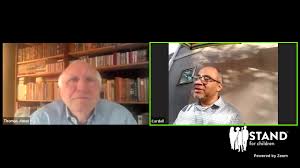We’re reprising this 2007 post in light of predictions about an uptick in migration to North Mississippi:
While we always consider Business Perspectives – a publication of University of Memphis’ Bureau of Business and Economic Research (BBER) – required reading, we’re not sure why local economic development organizations aren’t papering the area with copies.
The notion of North Mississippi as the land of milk and honey – and its lower taxes – is a myth widely perpetuated by real estate developers and homebuilders as they work hard to justify continued sprawl, overuse of tax freezes and continued emphasis on warehousing and distribution.
If local officials had a dollar every time they’ve been told that a company would move to the greener pastures of DeSoto County if public subsidies weren’t approved or that our homebuilding industry would be killed by higher taxes, they could pay off the Shelby County debt.
Conclusive
That’s why the analysis by Dr. Jeff Wallace, economist and associate research professor of the BBER, into the relative tax burdens of Shelby County and DeSoto County caught our eye, particularly this sentence about the historic southerly migration:
“Hidden behind the movement was the widespread belief that taxes were too high in Shelby County and were particularly onerous in Memphis. Taxes in Memphis and all of the communities in Shelby County were lower than those in Oliver Branch and Southaven. The taxes in Memphis, Olive Branch, and Southaven were comparable. The other communities in Shelby County had decidedly lower taxes…”
As Dr. Wallace emphatically concluded: “The evidence is clear – taxes are not lower in DeSoto County.”
Reality, Not Rhetoric
Well, finally, someone actually checked the reality behind the rhetoric. It’s also testament to a simple fact about sprawl. In the end, in trying to escape the problems of urban life – high taxes, pressures on public services and crime – they are often only replicated in another place.
Here are the assumptions for the analysis – $80,000 income, $150,000 home and two cars (2003 Saturn L200 and 2000 Chrysler Town and Country Van).
When comparing unincorporated areas of Shelby County to unincorporated areas in DeSoto County, Shelby Countians pay $865.39 less – $2,644.39 versus $1,779. That’s even with the much-loathed fire fee and wheel tax, by the way.
Savings
Meanwhile, the taxes in every city in Shelby County – including Memphis – are less than the taxes in Olive Branch and Southaven. While the difference for Memphians is about enough for a meal for two at Wendy’s, the savings for other cities range from $535 in Germantown residents to $887 Arlington.
Of course, the monkey wrench in the Mississippi equation is the state’s income tax and its personal property tax on automobiles. It more than offsets the much higher property tax bills for Memphians.
For example, the Memphis big two – the property tax and sales tax – amounts respectively to $2,726.25 and $1,850. The wheel county tax accounts for $100, the city wheel tax $60 and vehicle registration $48. The total Memphis tax bill: $3,007.50.
Tax Savings
Olive Branch taxpayers start with a much lower property tax bill – $709.50 – but they soon catch up and pass Memphians. There’s the $294.39 personal property tax on the cars; the $2,030 state income tax; and $1,400 in sales taxes. Total taxes: $3,017.89. (The total in Southaven is $3,059.89.)
Here are the tax totals for other Shelby County towns:
* $2,130.00 – Arlington
* $2,266.25 – Millington
* $2,322.50 – Bartlett
* $2,338.75 – Collierville
* $2,442.50 – Germantown
Crossing The Line
While Memphians only save about $10 when compared to Olive Branch and $52 to Southaven, they can – and do – increase their savings by crossing the county lines to take advantage of those lower DeSoto County sales taxes.
While Dr. Wallace was making a strong point about the relative tax burdens of Memphis and Shelby County with its southern neighbors, we couldn’t help but think about the unjustifiable disparity of the tax burden between Memphians and taxpayers outside of the city limits.
It graphically points up the disincentive that Memphians pay to live in the city. They immediately give themselves more disposable income by abandoning the city and moving anywhere else in Shelby County.
Fairness First
You’ve heard our position before, so we won’t belabor the point, but suffice it to say that regional services should be moved to the broader countywide tax base. In this way, the property tax bill for Memphians each year would roughly be the same as residents of Germantown, Collierville and Bartlett.
It’s one of those rare opportunities to inject fairness into our local tax structure. And overall, it’s the one doable thing that could put Memphis into an immediately better competitive position.






Alliterate Synopsis: Deluded decisions are decidedly dumb.
Memphis suffers because it’s too cloeely identified and associated with Mississip[pi in the first place, taxes or no taxes. That’s why Memphis won’t get out from under such an ugly shadow and history. Everybody across TN labels Memphis as being in MS. The rest of TN could not all be mistaken.
The rest of TN hates Memphis b/c it’s a majority black city, shekel.
If everyone else in Tennessee “labels Memphis as being in MS”, then they are simply supporting the Robert Wood Johnson Foundation which ranked Tennessee’s educational attainment in the bottom 10. Apparently the rest of the state is not capable of understanding even the most simple of maps. Additional proof of this is offered by the comments of an author in the “10 Ideas for Downtown” discussion.
Perhaps we should should organize “The North Mississippi Purchase” and ask Mississippi to just buy us from Tennessee? I bet MS would love to officially have us.
Other than the state flag, I think it might be trading up.
I have traveled and lived other places in this state, and I can tell you that the vast majority of the remainder of the state of TN, don’t really give a hoot for whatever reason about the city of Memphis, and just about everybody I’ve ever talked with pratcially disown Memphis and really do associate it Mississippi culture style and life, which in my opinion is certainly not a positive, certainly not a compliment, and certainly doesn’t help the image and national standing of Memphis, TN
If Debbie is correct, then what should we do? Change our culture to be more like east Tenn? Ask Eastern Tennesseans to be nicer to us?
We are who we are. What can we work on to make ourselves better no matter what anyone else thinks?
John,
It certainly seems the rest of the state spends an inordinate amount of time obsessed with Memphis and it’s supposed cultural associations. That in and of itself speaks to the city’s cultural, economic and social influence. After all, when was the last time you remember “disowning” a mountain hollow town?
Personally the idea of a Mississippi Purchase did make me laugh. Let’s throw in Fayette and Tipton counties to sweeten the deal. Then we would only be dealing with a metropolitan area split between 2 states which would greatly simplifie regional transportation and economic planning. Where is the petition to get this idea off the ground?
I agree “Business Perspectives” is a great publication that the SBBER puts out. The only problem is it is not accessible and not updated. The most recent copy on their website this morning is Spring 2008. I am on the email list for it and have never received a copy.
So if you put out a great publication and very few people get to read it, is it really a great publication?
Debbie, I’ve lived in East TN, and they don’t like Memphis b/c it’s a majority black city. Once you strip away all the BS, that’s what it come down to. So who cares what they say, like John said, should we aspire to be a 90% white city and listen to Kenny Chesney and watch Nascar? Their dislike of Memphis says as much about them as it does about Memphis.
Packrat, if you are as intuitive and empirical as you seem to project, then you must already know that there are real and mostly perceived negatives living in a 90% black city, so don’t pretend that’s not a reality in terms of perception not only by whites, but by blacks as well.
Diversity is one thing, and a good thing, but the domination of one culture over another presents very very real issues.
Let me give you an example: Miami. And we’re certainly not talking about black people.
Let me give you another : San Francisco and its heavy, homosexual orientation.
Here’s another : New York City and its heavy Jewish bent. Remember it was called Hymie town by J Jackson and he got in trouble for speaking the obvious.
One more : Orlando, now being called NYC/PuertoRican SOUTH.
I happen to think that balance is a good thing. Lots of people I encounter in and out of Memphis, think Memphis has no balance.
DRINKING MY BEER in FL, thinking of my return..lol
Not that it will matter to you with all your aliases, but Memphis isn’t 90% African-American. There’s no reason that diversity shouldn’t be a strength in a diverse world.
Pensacola, er, Debbie, er, Shekel, whoever you are at this point, Memphis isn’t 90% black. MOreover, if you are suggestng that Memphis should aspire to have a healthy diversity of opinion, race, etc., I agree. However, if you are suggesting that Memphis should somehow downplay the fact that it is a majority black city (and that’s exactly what you’re doing) to make white Tennesseans like us then you and Haley Barbour should get together with the SOCV and Ron Ramsey and have a circle jerk over the good ol’ days. BTW, when you have these mulitple ongoing coversations with yourself under different names, it just makes you look like a schizophrenic.
NYC has a heavily Jewish bent? Perhaps the one service that stereotypes actually do provide is that they allow easy identification of the uninformed within a population when individuals choose to rely on them as fact.
The fact is that those who identify themselves as Jewish make up around 9% of the population of New York City.
The more I read the posts of anon, shekel, pensacola- whatever- the more it seems akin to reading the irrational rants found buried in a time capsule.
Isn’t ‘Smart City Memphis’ an ‘alias’ ? Or is your legal name a requirement to post ?
It might be, but at least they employ the same “alias” throughout which does allow a certain level of responsibility and honesty with their writings. You could stand to benefit Anonymous, debbie, dumb city, shekel or whatever you are going by these days. To feign as though you are a unique poster and in all the cases that have been referenced where you have agreed with yourself- in some vain attempt to make it appear as though others actually share your opinion- is dishonest and immature. You have much to learn regarding rational public discourse.
Kniggets: This is a company blog that represents our opinions based on our work in Memphis and other cities. For that reason, it does not bear bylines.
Urban, hey man, you sound way too preoccupied in trying to control somebody else’s posts on an open blog. You’ve been all over the public web for years so I’ve seen too, offering up your opinions like people ought to think they are gospel…man, you’re not the only one who has an opinion and you’re too sensitive combined with being self-righteous man. Why don’t you worry about your own beehavior and posts on this site ? plus it looks like you spend more time spreading your thoughts on here and other sites all over the web, than most people..so wht’a up with that ?
Did you write the rules for participation ? man, get real, it’s the net.
Anon, Knigget, whoever you choose to be at this moment- the manner in which I choose to spend my time is my choice. This is definitely a case of the pot calling the kettle seeing the nature and topics of your ramblings under as many as 20 different pen names. Just as it is your choice to spend inordinate amounts of time trying to create new post names in a vain and childish attempt to somehow convince participants that you are not alone in your opinions. The city is my “beehive” as it were so your impotent attempts to discredit me and my motives as well as others simply speaks to the nature of your participation. With that in mind, I would suggest that as you continue to post here that you realize that many of us do come to the table with some authority and track records where city building is concerned whether that be as planners, architects, marketing experts, educators, community activists, small business owners or many other backgrounds. In these cases, the opinions and information offered by those with actual experience should be given greater weight than the quacking of an inexperienced individual.
I offer up my opinions as presented. You are welcome to agree or disagree as you like. I think the real issue here is that 1) your attempts to portray you posts as if they are originating from various authors was identified almost from the start and has been the focus of numerous comments and 2) that I, like almost all others here, are able to support their opinions with facts and precedent when you have little to support any comment that you post. In turn you appear to be frustrated that no one seems to give serious consideration to any opinion that you post.
Again, your approach is foolish.
Why ? the FACT (since you like to beg for FACTS) is that you have NO idea what my own professional experince is…but you give yourself ‘permission’ to actually CLAIM some other poster is “inexperienced”.
Now THAT my dear fellow makes you, not only arrogant and foolish, but quite silly.
You have no idea what my own ‘track record’ is, right ?
Only a fool would have the temerity to state that someone you know nothing about has no ‘authority’ to express opinions.
Pal, what you are is a dangerous person indeed.
You need to think about what you have the gall to actually state.
You are imbued and needlessly impressed with your own sense of purpose, position, and authority. That’s unfortunate.
Why don’t you spend less time in trying to create intellectual hegemony over posters like myself, and others.
I’m not seeking your permission, or endorsement, pal.
Anon, Knigget, Dumb City and a whole host of user names by a single person-
The fact is that not once did I state you personally did not have any sort of relative experience. My actual statement was “In these cases, the opinions and information offered by those with actual experience should be given greater weight than the quacking of an inexperienced individual”. The fact that you drone on about “false ego” within the city and yet you seem to have the most easily bruised ego imaginable is amusing at even the most elementary levels. You may not have been informed of this, but not everything in the universe is about you.
The most dangerous person is the one who makes baseless claims which they cannot support with precedent or facts. Their commentary deserves little if any regard except to be called out as trolls and simpletons.
..and one more for good measure:
“I’m not seeking your permission, or endorsement, pal”. Yet you feel compelled to respond to anyone that critiques your statements, opinions or your motivations with such hypocrisy as stating they are employing their fragile egos when the fact that you respond in such a manner at all exposes your own inadequate self esteem while also degrading the fallacy that is your statmenet. For someone that is not desperately seeking some type of approval or endorsement you do seem to bristle when it is not given or when your baseless opinions are pointed out for all to read (as they have been on so many occasions). In fact, you need for endorsement and approval was all the more apparent when it was shown and proven here on these pages that you were creating new pen names that referenced your previous posts in third person as if to lend some credibility to your notions. No anon, mbmouse, knigget, shekel, dumb city- you show a pathetically desperate need to have others either submit to your ideas or agree with them whole heartedly. This desperation runs so deep as to invent other persons to make it appear you are not alone in your opinions.